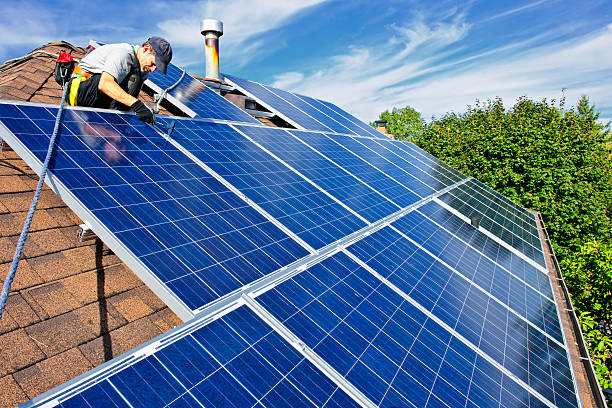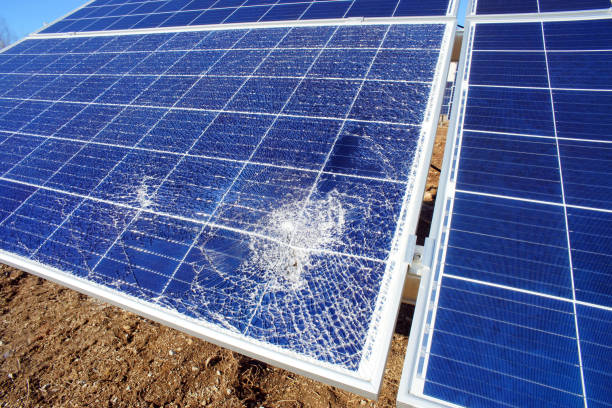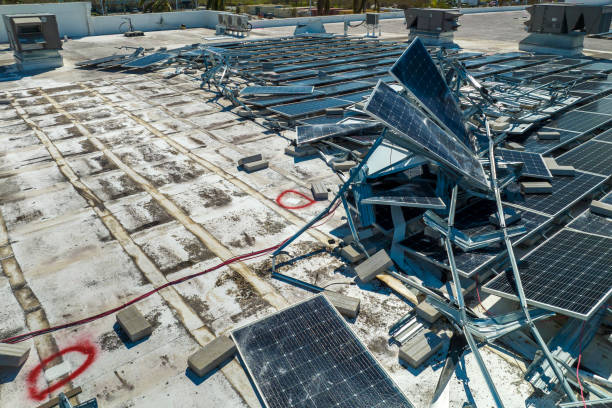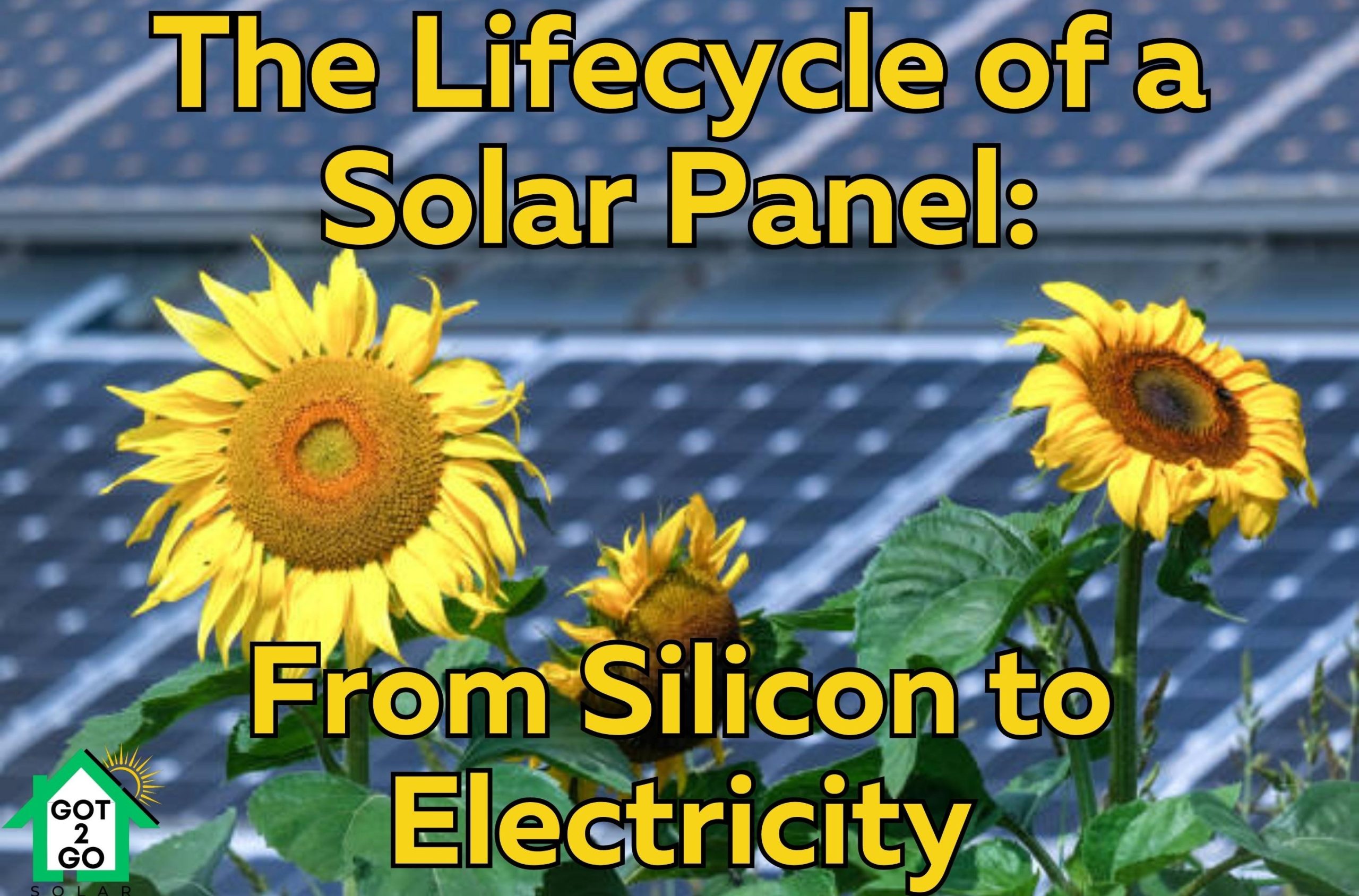When you step outside on a sunny day, you might marvel at how the light from the sun can power your home. It’s a fantastic process that hinges on the capabilities of solar panels. But have you ever stopped to consider the journey of a solar panel, from its raw materials to its final role in generating electricity for your home? If not, then this blog post will take you on a fascinating tour of the lifecycle of a solar panel, from its birth in silicon mines to its end of life.
Silicon Mining and Refinement

The journey of a solar panel begins with the extraction of silicon, the primary material used in most solar panels. Silicon is the second most abundant element on Earth, found mainly in the form of silica (SiO2), and is usually mined from quartz, sand, and clay.
After extraction, the silicon undergoes a series of refining processes to increase its purity. The refining process involves heating the silicon to extreme temperatures and reducing it to form metallurgical-grade silicon. This is then further refined into electronic-grade silicon, which is an extremely pure form, suitable for use in solar panels.
Manufacturing the Solar Cells
Once the silicon is prepared, it’s time to manufacture the solar cells. This process begins by melting the electronic-grade silicon and forming it into thin, cylindrical ingots. These ingots are then sliced into thin wafers, which will form the basis of the solar cells.
The wafers are then treated to form a structure known as a p-n junction. This junction is critical because it creates an electric field within the cell, which is necessary for the cell to function. To form this junction, the wafer is “doped” with other elements, creating layers with different electronic properties.

Next, an anti-reflective coating is added to the top of the cell, and metal conductive strips are placed on top. These strips collect the electricity generated by the cell. At this point, the individual solar cell can convert sunlight into electricity, but its power output is minimal, so it’s time to assemble the panel.
Assembling the Solar Panel
The individual solar cells are arranged in a grid pattern, typically with 60, 72, or even more cells per panel. The cells are soldered together, and the whole assembly is encapsulated in a protective material, often EVA (ethyl vinyl acetate). A layer of glass is placed on top for further protection and to allow sunlight to reach the cells, and a durable backing layer is added. The assembled unit is then framed, usually with aluminum, which provides structural support.
Installation and Energy Generation
The next step in the lifecycle is the installation of the solar panel system at its final destination – your home. Installation requires careful planning to maximize energy production, including a comprehensive roof evaluation and precise angling and positioning of the panels. For more installation tips: (Expert Tips for a Successful Solar Panel Installation: Start with a Roof Evaluation).

Once installed, the solar panels work by absorbing sunlight with the solar cells, which generates a flow of electrons, or electricity. This direct current (DC) electricity is converted to alternating current (AC) by an inverter, making it usable for your home. Any excess energy can be fed back into the grid or stored in a battery system for later use.
Apart from reducing your electricity bills, solar panels can increase the value of your home (Increasing Your Homes Value with A Solar Panel Installation), and play a crucial role in reducing environmental impact by substituting traditional sources of energy (The Environmental Impact of Solar Energy: What You Need to Know).
Maintenance and End of Life
As a solar panel owner, it’s important to understand that while solar panels are designed for minimal maintenance, they are not completely maintenance-free. General upkeep involves regular cleaning to remove dust and debris that can impact performance. However, it’s crucial to follow the manufacturer’s instructions on cleaning and maintenance to avoid causing damage to the panels.

Over time, the efficiency of solar panels decreases. This process, known as degradation, can be influenced by a variety of factors including weather conditions, panel quality, and installation quality. A well-installed, high-quality solar panel will typically degrade at a rate of less than 1% per year, which means after 25 years, it should still be functioning at around 80% of its original efficiency. However, actual lifetimes can be much longer, and many solar panels continue to produce electricity far beyond their rated lifetimes.
After about 25 years or more, when a solar panel has reached the end of its life, it becomes a waste stream that must be managed safely. So, what happens when a solar panel is no longer producing electricity efficiently?
Safe Disposal and Recycling
Solar panels are made up of several components, including glass, plastic, and various types of metal. Some of these materials can be valuable and recyclable, while others may be more difficult to manage.
When a solar panel reaches the end of its usable life or is otherwise discarded, it becomes solid waste and may also be regulated as hazardous waste if it is determined to be hazardous. This is primarily due to the potential presence of heavy metals such as lead and cadmium, which could be harmful to human health and the environment at high levels. Whether a solar panel is considered hazardous waste can vary, even among panels from the same manufacturer and model. Regulations under the Resource Conservation and Recovery Act (RCRA) must be followed to ensure the panels are safely recycled or disposed of


As the solar photovoltaic (PV) market grows, so will the volume of end-of-life panels. By 2030, the United States is expected to have as much as one million total tons of solar panel waste, and by 2050, as many as an estimated 10 million total tons of panels. These projections highlight the importance of developing effective recycling and waste management strategies for solar panels.
In some cases, solar panels can be refurbished and reused. This process typically involves testing and replacing individual solar cells within the panel. Other components, such as the metal framing and glass surface, can be recycled and used in the manufacture of new products.
However, recycling is not always the most cost-effective or environmentally friendly solution. The process of recycling solar panels can be energy-intensive and can produce greenhouse gas emissions. Furthermore, the market for recycled solar panel materials is still developing, and in some cases, the cost of recycling may exceed the value of the recycled materials.
In conclusion
The lifecycle of a solar panel, from silicon to electricity, involves several stages, each with its own set of considerations. From the extraction of raw materials, through manufacturing and installation, to maintenance and end-of-life management, understanding this process can help you make informed decisions about solar energy.
Grab your FREE Solar Buyer’s Checklist NOW
Make an informed, and savvy decision about your power







